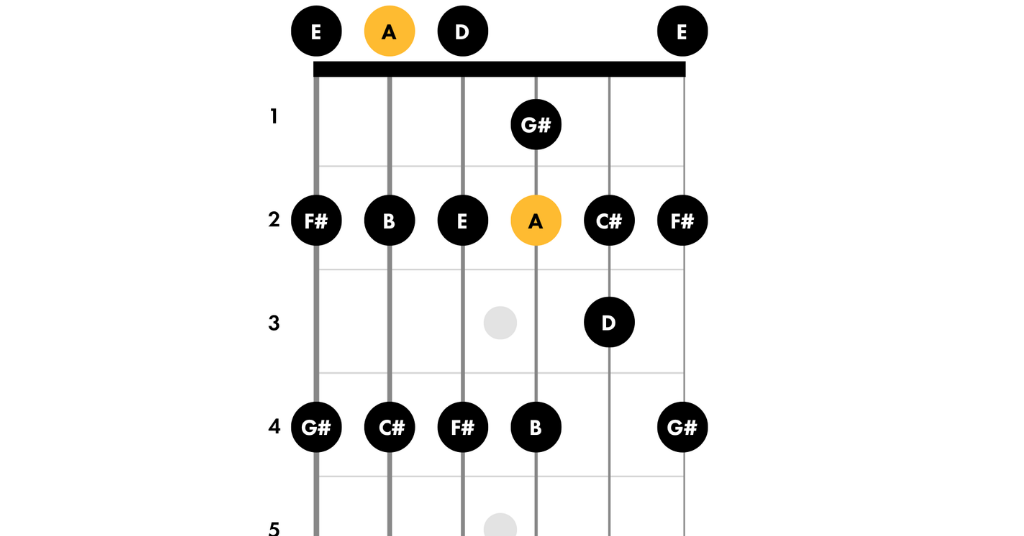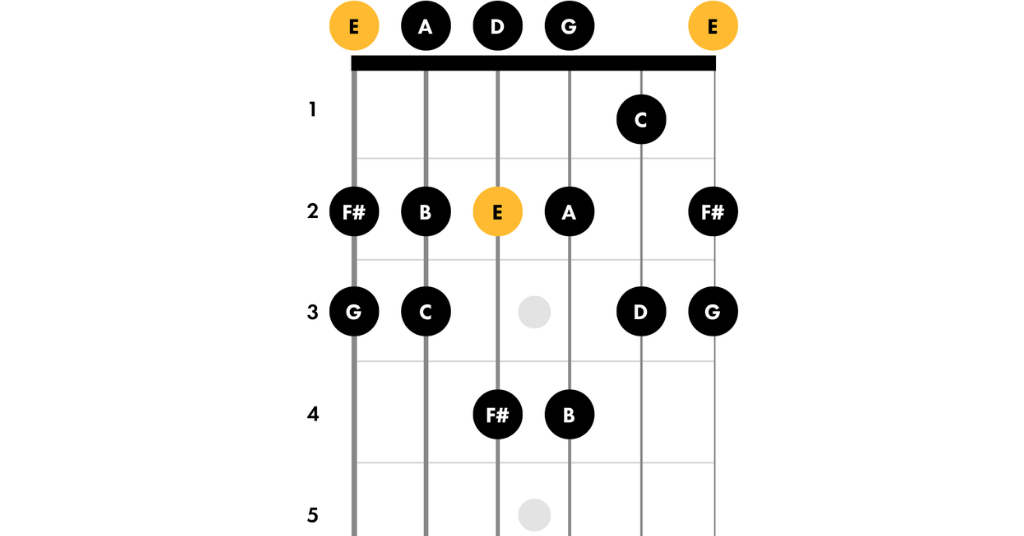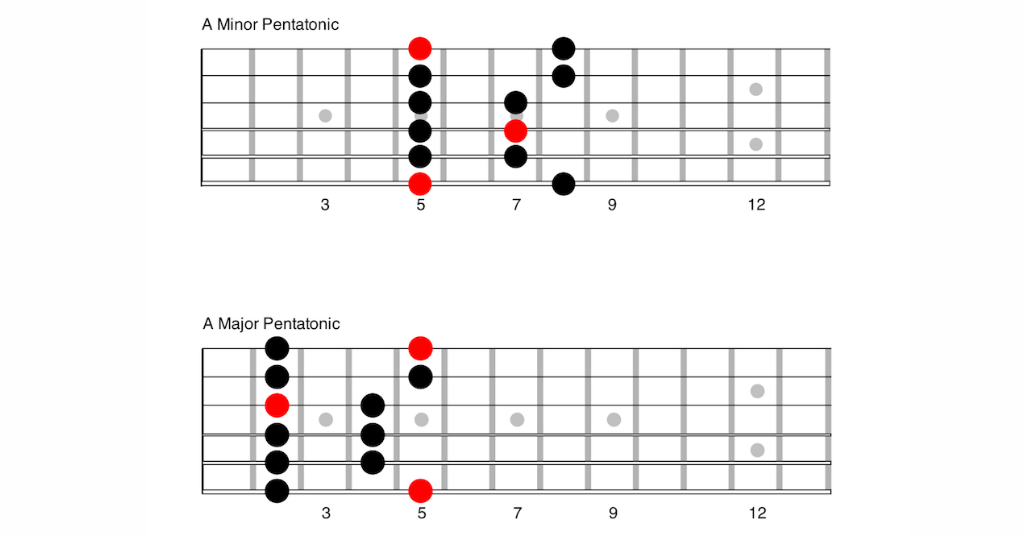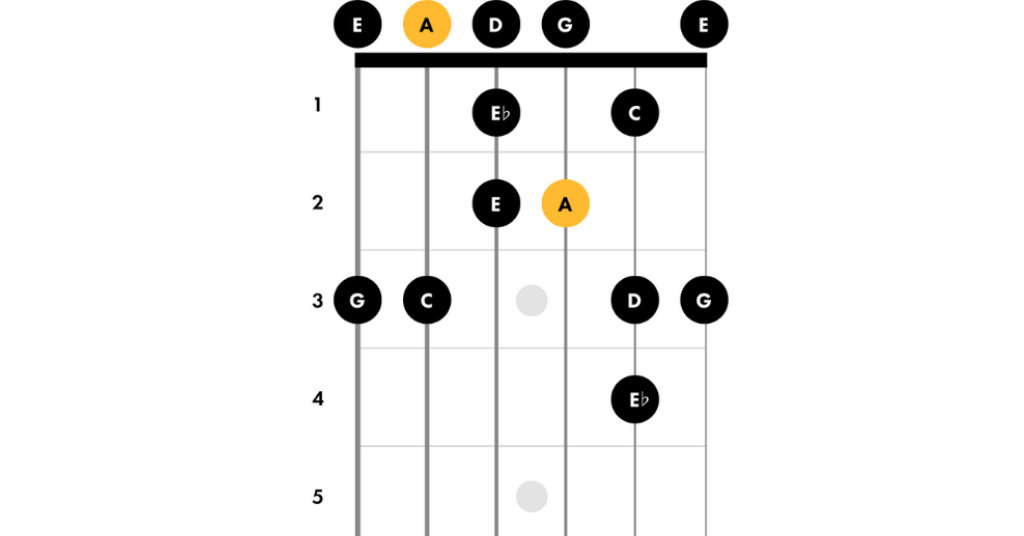Whenever it comes to the basics of how to play guitar, there are a lot of theoretical topics that your child can study. Perhaps, one of the great ways to initiate the journey of playing the guitar for your child is by teaching them the basics of guitar scales. And you must be pondering over the thought that what are the best beginner guitar scales to learn and master? And why? To answer these questions, let’s take a look at what scales are, and what essential steps are needed to be followed to ace the basics of guitar scales.

What is a Scale?
A scale is defined as a series of notes that are written in proper alphabetical order, going right from the root note to its octave. These notes are used for writing and playing melodies. The guitar scales can also serve as a foundation rock for harmony, as chords are built from scales. Therefore, when people start learning scales, they unknowingly cross a bridge and start developing an understanding of the music theory. This, in turn, will make your child a better guitarist.
Related Article: 7 Best Musical Instruments For Kids To Learn
What is the Right Time to Learn Guitar Scales?
There is no particular age to learn the guitar scales. Since they serve as the foundation rocks for learning guitar, and they are extremely important and beneficial so your child can learn them at any stage of playing the guitar.
Quick Steps for Learning the Guitar Scales
To master the art of playing the guitar like a pro, you must know about the different guitar scales. Hence, we have created an in-depth guide that will help you.
Step 1- Understand and Master the Basics
• In total 12 notes could be easily played between the lower root note and higher root note that is a full octave mode.
• Compare the 12 notes with that of a ladder with 12 steps. The steps of the ladder represent the octave. No matter what, the 1st and the 12th step will always be there, in the same place, however, the pattern between the different steps can change.
• The pattern of the steps on the ladder represents the different scale patterns.
• As already mentioned, there are 12 steps (also known as notes) and there is an end number of different patterns and permutations that your child can choose to play along with.
• Over the period it has been observed that kids who try to learn guitar scales tend to get overwhelmed by the number of different patterns, but it’s very simple and easy to master.
Step 2- The Major Scale

• It is extremely important to understand how the major scale works and functions because its pattern serves as the yardstick by which your kids can describe any other musical sound.
• Every chord and scale is named by how it is compared to a particular scale. If your kids are planning to kickstart their musical journey as a guitarist, this is the best starting point.
• The major scale is regarded as a bright and happy-sounding scale. It is not only uplifting but sweet and optimistic too.
• Scales are the patterns that can move.
• One of the most vital points that your kids must know is that the scale patterns are moveable.
• One thing that rules the tonality of the scale is where you START playing it.
• On every scale, there is a root note. The root note is nothing but what names the scale.
• While in A minor pentatonic scale, the root note is A. Similarly, in the E major scale, the root note is E.
• The best way to make your kids understand root notes is by comparing them to their favorite superhero. Therefore, the root note is the hero note.
Step 3- The Minor Scale

• Apart from the major scale, the other scale that you must know if you want to ace the guitar scales is the Minor Scales. Well, there are 3 different types of minor scales-
• The Natural Minor Scale (it is an important minor scale which you be aware of).
• The Harmonic Minor Scale (it is a cool scale and it will be good if your kids can learn this, but it’s not important).
• The Melodic Minor Scale ( an important part of the minor scale family, but again it’s up to your kids to learn this).
• Whenever people talk about “the minor scale”, they are always talking about the natural minor scale. It is the primary version of these three minor scales. If you want to understand the guitar scales, you also need to know about the mood that they create.
• Lastly, it also serves as a building block for mastering the minor pentatonic scale and the blue scale.
Step 4- Major and Minor Pentatonic Scales

• So, till now we spoke about the 2 important pillars of learning and mastering the guitar scales, that is the Minor and the Major Scale.
• No matter what, your kids must be aware of these 2 scales as they are the fundamental concepts for learning the instrument of the guitar.
• However, most of the guitarists prefer to play its abridged version that is- Major and Minor Pentatonic Scales.
• If your child has a basic understanding of the major and minor scales, they already know how to play their pentatonic versions.
Step 5- The Blue Scale

• The blue scale shares a very close association with the minor pentatonic scale.
• It sounds absolutely phenomenal in most of the rock, indie, country, and blue scenarios.
• One of the most noteworthy things about the blue scale is that you can play it with both the major and minor scales.
• If your child happens to be a beginner, learning the blue scale can be a great boost for their musical journey.
Step 6- Introduction to Keys
• The simplest way to play lead guitar that will sound good is to play the notes from a scale that will perfectly blend along with the song’s key.
• For instance, if the key of a song is C Major, your kid will sound good if they play a solo with the notes from the C major scale.
• Now, you must be wondering about how to find out the key to a song?
• Well, the easiest way to look at this is by looking at the first and the last chord of the song.
• So, let’s consider an example where say the first chord of the song is an A minor.
• A minor scale and it will sound really good. Some notes may sound better than the other but none will sound bad.
How to Practice Scales?
• Once your child is exposed to guitar scales, you need to do to provide them a scale pattern.
• The easiest way to do this is by breaking the scale into bite-sized chunks.
• Don’t let your musical creativity be restricted to a single room. Your kids need to develop a sense of feel for these musical patterns.
• They can simply play the scales over background music.
Related Article: 10 Reasons Why Your Kid Should Enroll For the Guitar Classes
Key Takeaway
As parents and educators, we always want our children to succeed and lead a happy life. Learning the basics of a guitar will help them to focus on different tasks. Moreover, playing guitar will help in improving the coordination between the hands and the eye. This further helps in improving and developing gross-motor skills in kids. Therefore, the importance of a guitar in the development of your child cannot be denied! This guide will help your kids to learn and master all the important guitar scales. Moreover, for efficient learning, you can visit the official website of PiggyRide as they offer some phenomenal online guitar courses. And you know what’s the cool part?
Newly launched features like party-mode, practice-mode, loop-clip, section-view, and speed change will make their learning a fun process.
Let those little fingers create some melodious magic of music!


Leave a Reply